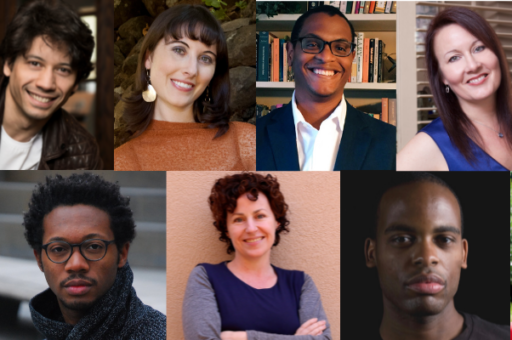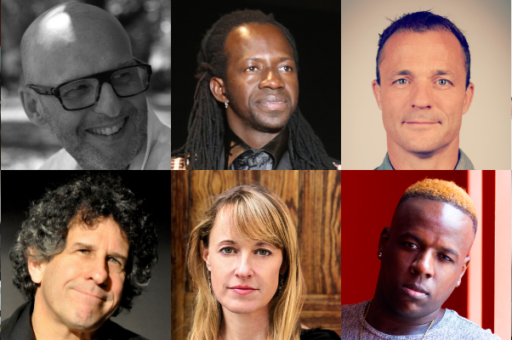The fellowship award sponsors four fellows at the Center for Ballet and the Arts for an entire year, with research interests spanning Indian dance, choreography, history of the body, and musicology
The Center for Ballet and the Arts at New York University (CBA), an international research institute for scholars and artists of ballet and its related arts and sciences, today announced the four fellows for the 2022-2023 academic year.
The 2022-23 fellows cohort includes Anurima Banerji, Hope Boykin, Brooke Holmes, and Kara Yoo Leaman.
Anurima Banerji, a dance scholar, is exploring how the category of “classical dance” was invented, predicated on the romanticized link with Indian antiquity. Creator, choreographer, and writer Hope Boykin is developing an ongoing and moving dance memoir. Brooke Holmes, a historian, theorist, and writer, is continuing her collaborative research with curators and artists and working on a collection of essays that conceptualize the historiography of the body. Finally, musicologist Kara Yoo Leaman is exploring the concept of choreographic musicality and working on a monograph analyzing the ballets of George Balanchine from a music-theoretic perspective.
“We are honored to bring leading scholars and practitioners in dance and the body together for a year of exploration and conversation. We are looking forward to the collaborations and new work from these artists and scholars,” said Jennifer Homans, Founder and Director of the Center for Ballet and the Arts.
The appointment of these four fellows represents a new phase for CBA’s fellowship program as it enters its ninth year. In contrast to previous semester-long awards, the CBA fellowship now supports fellows’ research for an entire year, allowing more time and space to create work, contribute to the academic discourse of NYU, and weave dance into their study and research practices.
CBA is a place for artists to design new work—creating new dances and building artistic collaborations—and for scholars to generate new ideas. CBA fellows come from many disciplines and bring a breadth of experience to the residency. They are not required to be experts in ballet. The program encourages fellows to engage with people and ideas beyond their core disciplines and take risks in their work without the pressure of a finished product. CBA fellows enjoy access to the extensive scholarly and cultural resources of NYU, in addition to time, studio and office space, and financial support to develop their work in a supportive but critical community of peers.
Previous fellows have included writer and reporter Marina Harss, choreographers Raja Feather Kelly and Ogemdi Ude; scholar Janice Ross; musical artist Bridget Kibbey. For more information about Fellows’ work supported by CBA, please explore their published and presented works.
About the 2022-23 Fellows
Anurima Banerji is Associate Professor and current Graduate Vice Chair in the Department of World Arts and Cultures/Dance at University of California Los Angeles. Her research principally concerns critical historicizations of Indian dance and its relationship to the state. She is the author of the monograph Dancing Odissi: Paratopic Performances of Gender and State and the recipient of the 2020 de la Torre Bueno Prize awarded by the Dance Studies Association.
Project: Classical dance is a significant trope and emblem of identity for the contemporary Indian state, its subjects, and its diasporas. In this project, however, Anurima Banerji argues that there is no such thing as “Indian Classical Dance” because each term in that seemingly stable formulation can be critically interrogated to reveal its contingencies–and beyond that, there is no actual framework for the “classical” in the Indian aesthetic realm, historically speaking. She examines how the aesthetic category of “classical dance” was invented and situates its institutionalization as a legacy of colonial modernity, later enshrined by postcolonial Indian authorities as an official artistic genre alongside the “tribal,” the “folk,” and the “contemporary” designations in cultural policy. Today, the Indian government recognizes eight dance forms as classical: Bharatanatyam, Kathak, Manipuri, Odissi, Kathakali, Mohiniattam, Kuchipudi, and Sattriya. Rather than attending to any single species of dance, however, this project looks at the production of a whole system of knowledge production tied to classicism in the dance arena, promulgated by different regimes of state power. Banerji suggests that the ideology of classicism was imported to India during the period of British imperialism and used as a politicized lexical term by Indian elites to establish cultural equivalence between Indian dance practices and ballet. Critiquing the “classical” as a universal or self-evident category, the project is aimed at provincializing, historicizing, and decolonizing the “classical” as a prevailing genre in dance.
Hope Boykin, two time “Bessie Award” winner, was an original member of Complexions, danced with Philadanco, and most recently completed her 20th and final year with the Ailey American Dance Theater. Boykin serves as Artistic Advisor for Dance Education for the Kennedy Center and Artistic Lead for the Kennedy Center Dance Lab.
Project: As a creator, choreographer, and writer, Hope Boykin will work and make work with words and life experiences, an ongoing and moving memoir of sorts; mixing Interdisciplinary forms – film, original text, and her movement-language. Using a vocal and non-vocal soundtrack, pushing boundaries and personal expressions of transparency, uncovering fear and failure within her truth, she has decided to uproot her comfort and find a place for her story. Boykin is growing to accept all of the intricacies of telling this story, and becomes more unafraid to use the aspects of her specific choices and experiences. Along with several company commissions, this work and passion project will continue to build from a history of circumstances pushing Boykin toward her goals; when she finally determines to “hope against Hope.”
Brooke Holmes is a historian, theorist, and writer who teaches at Princeton University. She is the author of The Symptom and the Subject: The Emergence of the Physical Body in Ancient Greece (2010), Gender: Antiquity and its Legacy (2012), and she is currently completing The Tissue of the World: Sympathy, Life, and Nature in the Ancient Mediterranean.
Project: During her fellowship year, Brooke Holmes will bring together different aspects of the transdisciplinary practice she has been developing over the past decade around the concept of the physical body—that is, a body with a nature (physis). This body, understood as an object of elite knowledge and a marker of hierarchical difference along lines of race, gender, sexuality, and species, is embedded in a matrix of discourses of nature that are canonized as Greek in the late centuries bce and early centuries ce and remain stubbornly implicated in contemporary culture. Over the year, Holmes will be completing final revisions to her book manuscript, “The Tissue of the World: Sympathy, Life, and Nature in the Ancient Mediterranean,” while continuing her current collaborative research with curators and artists as preparation for a new Athens-based group exhibition focused on the figure of “current(s)” in the Mediterranean and different modalities of body-work, zeroing in on exhibition-making as generative of new communities of knowledge and praxis. By paying particular attention to the temporal ambiguities generated by cross-pollinating practices of performance and sculpture, she aims to deepen her theorization of how we narrate the history of the physical body. This work will inform a third project, a collection of essays written over the past ten years that conceptualize the historiography of the body across the ancient/modern divide through the history of science and medicine, queer unhistoricism, and classical reception studies, while critically engaging the biopolitical contours of modern self-constructions shaped by an appeal to the Greco-Roman past.
Kara Yoo Leaman (CBA ’20) is an independent music theorist and a co-founder of the Dance and Movement Interest Group of the Society for Music Theory. She has published articles in Music Theory Spectrum, the Journal of Music Theory, and SMT-V: The Society for Music Theory Videocast Journal.
Project: Forty years after his death, George Balanchine’s ballets continue to be acclaimed for their exceptional musicality. While many people may agree, there have been few attempts to explore the bases for such judgments. What specific details cause a ballet to seem musical? What elements of the style or structure of a Balanchine ballet might cause dancers or viewers to value its musicality differently than that of another ballet? Are there different types of musicality? If so, do they share any core qualities? How do the qualities that create a sense of (any kind of) musicality interact with the enjoyability or memorability of dancing or watching dance? More broadly, what does it mean for choreography to be musical, and to whom? In consideration of what has already been said and written on these topics, this project will explore these questions further through in-depth studies of Western theatrical dance choreographies, starting with ballets by Balanchine and then expanding to works by other dance makers. Through collaborations with dancers, choreographers, stagers, musicians, and scholars, this project will bring together multiple perspectives to shed light on some of the many facets and types of choreographic musicality.
About The Center for Ballet and the Arts at New York University
The Center for Ballet and the Arts at New York University (CBA) is an international research institute for the performing arts, organized around dance. It exists to inspire new ideas and new dances, expanding the way we think about the art form’s history, practice, and performance in the 21st century.
The Center is made possible by founding and ongoing support from the Mellon Foundation and New York University and additional support from the Virginia B. Toulmin Foundation and Rockefeller Brothers Fund. We also extend a special thanks to individual members of CBA’s Center Circle for their essential support.




